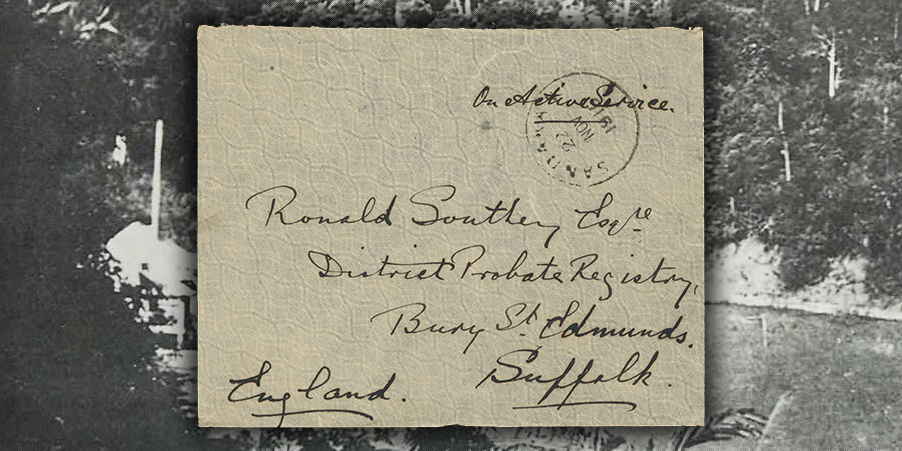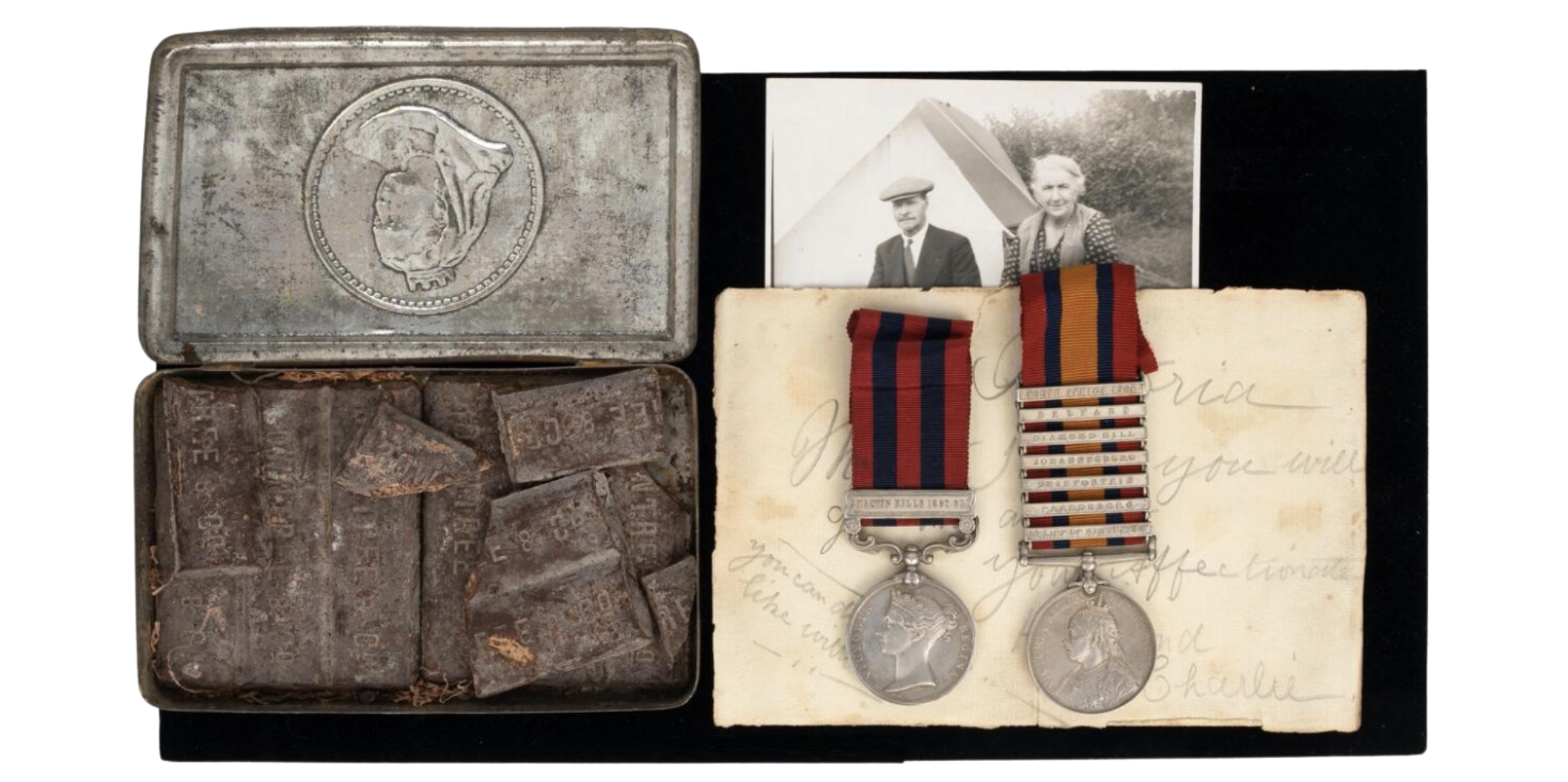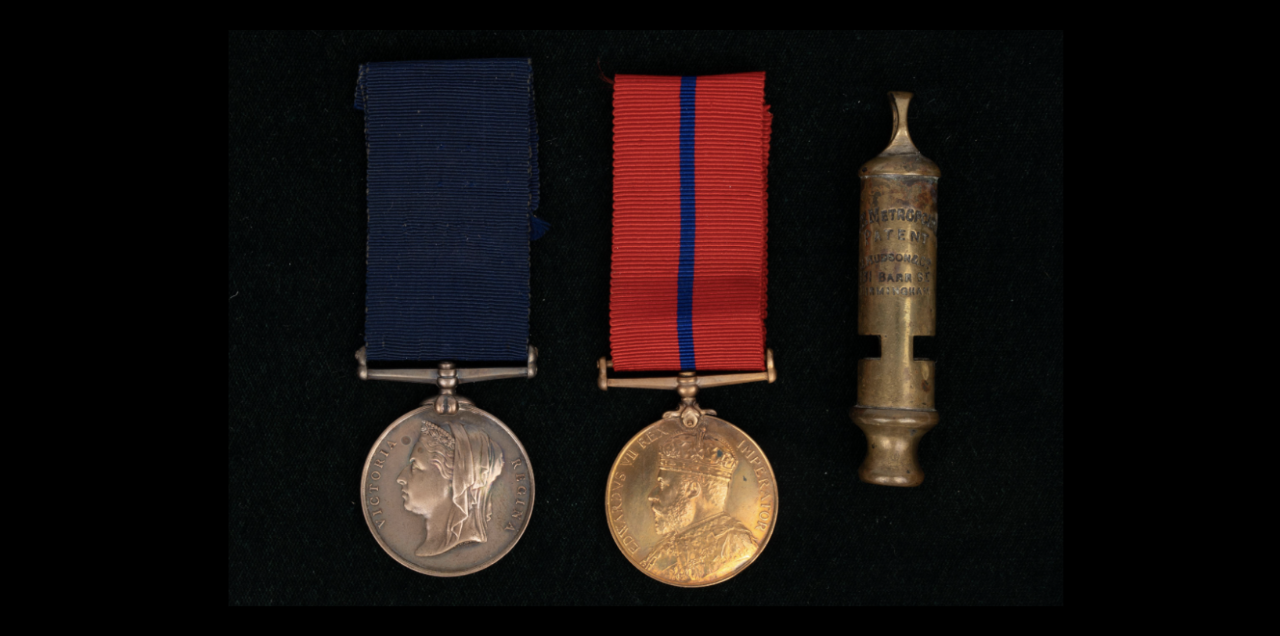Recording the brave and storied career of Flying Officer J. L. Memory
Baldwin’s Auctions is proud to host a landmark militaria sale of important British and European items spanning from 1840 to the present day, including the Crimean War, Victoria’s colonial wars, the Boer War, and World Wars 1 and 2, in addition to several modern conflicts. Over 200 rare, unique and highly collectible pieces, sourced from five vendors, have been curated for the sale by miliaria expert Mark Smith, and include a varied collection of armoury, weaponry, helmets, dress uniform and diverse war ephemera, curiosities and trench art.
Highlights of the auction include an iconic Irvin flying jacket with air gunner’s and observer’s logbook to the possession of F/O J. L. Memory, who undertook and logged 44 operations, notably one on 6th June 1944. On this date, D-Day, Memory records a successful attack on an enemy submarine while was on anti-submarine patrol as part of No. 502 Squadron off the coast of France. On 28th December 1944 – on his 44th and final operation – Memory and his crew were on anti-shipping patrol over Skagerrak and Kattegat, where they attached a 5000-tonne motor vessel escorted by two enemy vessels. Memory records direct hits with two bombs and the ship left burning well, as well as heavy headlight and Flak ad infinitum. The Irvin jacket is in exceptional condition with all original zips and is estimated at £600 – 800.
F/O J. L. Memory joined the RAF in 1940 and completed his initial training as a wireless operator at Blackpool and Yatesbury, reaching the required speed of 25 wpm in ‘plain language’ and code. He was then posted to Morfa Towyn (now Tywyn) in Wales and was attached to the section which flew radio-controlled Tiger Moths (‘Queen Bees’) for use by the Anti-Aircraft gunnery school at Barmouth. He did a little unrecorded flying in specially adapted Hawker Henleys and Westland Lysanders towing drogue targets for the gunners. Memory spent the next six months on specialist signals courses in London and at Cranwell, and then went on to an air gunnery school in Anglesey, flying in Avro Ansons, with Miles Martinets as the drogue towing aircraft.
He was commissioned at the end of the gunnery course and posted to No. 502 (Ulster) squadron, then based at Holmsley South in Hampshire with its sister squadron No. 58. At the times they were flying Armstrong Whitworth Whitleys, twin-engine machines with a curious ‘nose down’ flying attitude. The squadrons were in the process of converting to Handley Page Halifaxes, powered then by four of the familiar Merlin engines. Squadron duties at that time were with No. 19 group of coastal command, mostly on anti-submarine patrols in the Atlantic. In December 1943 the squadrons were moved to St. David’s in South Wales, and in the build-up to D-Day and afterwards they flew mostly in the Channel and the Bay of Biscay. In September 1944, they were transferred to Stornoway in the Outer Hebrides, to carry out anti-shipping ‘strike’ duties in the offshore waters of Norway, Sweden and Denmark. During this time, they converted to Halifax IIIs, with the more powerful radial engines.
Early in 1945, Memory completed his tour of duty with 502 Squadron, having notched up the requisite 500 hours, which included 44 operational sorties. After a post in Hereford for an aircrew officers training course, Memory spent his last months in the service at RAF Mountbatten in Plymouth.
The Baldwin’s Militaria Auction on 8 August 2024 will be followed later on the same day by a special single-lot auction of a unique Congressional Medal of Honor (the US equivalent of the British Victoria Cross), which was posthumously awarded to Nicholas Minue for a brave attack against the Germans in Tunisia, Africa. Minue was and still is the only Ukrainian born recipient of the Congressional Medal of Honor. Baldwin’s is working with the charity United 24 to donate some of the proceeds from the sale to Ukraine’s humanitarian relief efforts. The item is expected to sell for £250,000 – 300,000.




